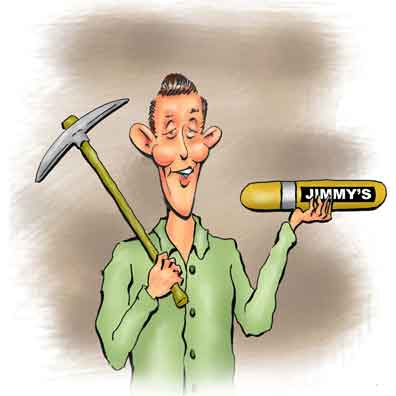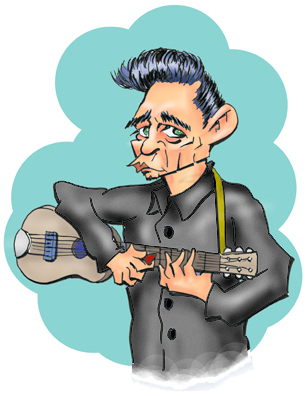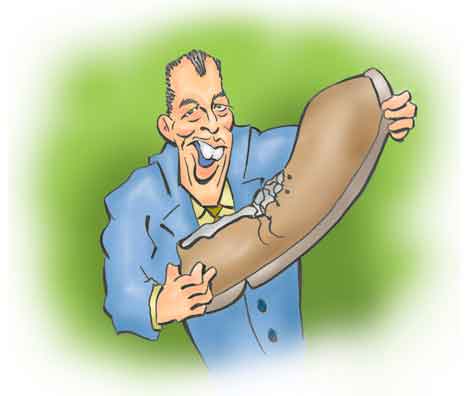Al Hirt
"A little bit of this, a little bit of that. I never had any specific style."
- Al Hirt
Alois Maxwell Hirt - Al, of course - was arguably the last jazz instrumentalist to have a song reach the Top 10 Billboard Pop List. That was "Java" which peaked out at #4. It also reached #1 for the Adult Contemporary category - which includes "Easy Listening" - and was listed #5 on the Billboard Hot 100 on February 22.
But ....
"Java" was not - that's NOT! NOT! NOT! - a jazz recording. In fact, the Grammy was specifically awarded for the best NON-JAZZ instrumental. The Grammy for best jazz recording was "Conversations with Myself" by Bill Evans.1
Footnote
The Grammy Categories are, or course, highly specialized and Bill's Grammy was for a jazz instrumental by a small group or individual. The Grammy for a large jazz band went to clarinetist Woody Herman.
It was "Java" that landed Al his sole Grammy Award and was his first Gold Record. But he also had a number of other hits - "Sugar Lips", "Cotton Candy"2, and "Fancy Pants" - and he also played the theme song for the television show "The Green Hornet". The song was actually the "Flight of the Bumblebee", not "Flight of the Green Hornet", and was written by Nikolai Rimsky-Korsakov, whoever he was.
Footnote
Al's albums Honey in the Horn (which included "Java") and Cotton Candy also reached 500,000 sales and so "went Gold" as they say.
Technically Louis Armstrong nudged Al out with his recording of "Hello, Dolly" which hit #1 on the Billboard Hot 100 on May 9, 1964. The song also won Louis a Grammy and also went Gold the year of its release.
"Hello, Dolly", though, was given the award for the Best Male Vocal Performance of the year, not as an instrumental.
Although Al - as his playing of "Flight of the Bumblebee" attests - was a true virtuoso, his most popular tunes did not always require great technique. It wasn't unusual to hear "Java" in the repertoire of many an aspiring middle school trumpet player. When playing live, though, Al would often spice the tunes up.
But even though purists may dismiss Al's popular hits as (ptui) "novelty tunes", he was primarily a jazz musician and his performances, whether live or on television, had plenty of the genre. His first real television appearance as a soloist was - get this - on The Lawrence Welk Show in 1958. Despite this, well, inauspicious start, by the 1960's Al was a staple on the popular prime time variety shows as hosted by Dinah Shore, Jimmy Dean, Perry Como, Andy Williams, Jonathan Winters, Joey Bishop, Mike Douglas, David Frost, Bob Hope, and Johnny Cash. And of course, he appeared on The Tonight Show with Johnny Carson (fourteen times) and on the really big shew hosted by Ed Sullivan.
Al performed on shows with ...

Jimmy Dean ...

... Joey Bishop ...

... Johnny Cash ...

... Johnny Carson ...

... and Ed Sullivan
They were really big shews.
Al was born in 1922 in New Orleans. He began playing trumpet at age 6, and after high school he was good enough to get admitted to the Cincinnati Conservatory of Music. Some stories say he graduated and still others that he went all the way to a Ph. D. Actually Al matriculated in 1940 but left the school in 1941 to join the Army. He never returned for formal studies although CCM did award him an honorary doctorate in 1964.
Back in civilian life, Al began his professional career by playing for Benny Goodman, and his later comments seem to confirm that Benny could indeed be a stern taskmaster. All in all, though, he spoke well of other musicians albeit openly and frankly. He once commented that Arthur Fiedler, longtime leader of the Boston Pops Orchestra, knew more about show business than he did, even to the point of deliberately staging a "reluctant" curtain call where Al had to provide some theatrics.
One of the most famous incidents involving Al wasn't about music. Instead it occurred during the Mardi Gras parade of 1970. The usual telling is that while riding on a float, Al was hit in the mouth with a brick. His costume included a mask but it provided little protection and the wound required 12 stitches to close. The stories circulated that Al might never play the trumpet again and he did so only after a long and slow recovery.
With today's contradictorily and simultaneously credulous and yet debunking culture, it's become common to question Al's story. That he was injured in the upper lip and required medical sutures is not in doubt. But some suggest - or at least wonder - if the injury may have arisen in some more ignominious manner and so the hit-by-a-brick was a fabrication to avoid the embarrassing truth. After all, the Al Skeptics ask, why were no police summoned after the incident? And if he was hit by brick, surely the injury would have been more severe than a cut upper lip.
It may be, of course, that the first telling was a bit hyped up. For instance, the being "hit-by-a-brick" story is contradicted by the original news story which said Al was struck by a piece of concrete. No size was mentioned and if it was hurled any distance it couldn't have been too large - perhaps only large enough to cut Al's lip. And it's also likely that the original injury didn't seem to be that serious and only later did Al realize that he needed medical attention. By that time there would have been no point in involving the police.
OK, we say. All that speculation is well and good. But is there any support for such a scenario?
Well, yes. When Al later appeared on The Tonight Show - he was a guest only a month after the incident - he said that the news stories were indeed a bit overblown. And he did indeed say that at first he didn't realize the extent of the injury. Only when one of his band members pointed out that the injury looked serious did he go to a doctor. It's also important to note that no one who was with Al in the parade ever contradicted his account. Certainly no one who ever knew him came forward in later years to say, "Oh, Al wasn't hit with a brick. What really happened was [fill in the blank]."
But most of all it seems unlikely that Al would have invented an excuse that would have hurt the reputation of New Orleans. He was a long-time ambassador for the city, boasting of its culture, music, and its cuisine. In fact, for all his appearances throughout the world, most of Al's performing was at his club on Bourbon Street. He actually played at two different locations, the first opened in 1960 and later he moved to a new club at 501 Bourbon Street which closed down in 1983.3
Footnote
Although there are still plenty of jazz clubs in New Orleans, the decline in its popularity has affected the economics of maintaining dedicated venues. Today jazz has been lamented as one of he least listened to music and much has been written about the causes: the rise of the teenagers who wanted a new music their parents didn't like, the morphing of jazz from dance music to technical gymnastics for the musicians, the economic advantages of groups pared down to guitars and drums, you can take your pick.
There's also the issue that music that would have once been called jazz ends up being called something else. It might be argued that the group Blood, Sweat, and Tears should really be considered a jazz ensemble - certainly their brass players, like trumpeter Lew Soloff - were primarily jazz musicians. And the discerning listener will find that when their three Top 10 hits, "When I Die", "Spinning Wheel", and "You Made Me So Very Happy" were released as singles, there was a purging of instrumental playing that by any other name should be dubbed as jazz. One critic pointed out that when the group played in a live concert they tended to stray off into progressive jazz which, he added, tended to lose their audience who were there, after all, to hear rock.
The Swinging Sixties may have been the heyday of Al's recording career, but he continued to perform live and appear on television long after. He was featured in the half time show of the Super Bowls in 1970, 1972, and 1978. His last appearance on The Tonight Show was in 1982, and he was even a guest on Late Night With David Letterman in 1988. Al's last television appearance was in 1997. By then though, his health was in decline and in his last year he was getting around in a wheelchair. Al died in 1999 age 76.
References and Further Reading
"1964: Al Hirt Wins a Grammy for 'Java'", NOLA, July 7, 2021.
"Al Hirt; Legendary Dixieland, Pop Trumpeter Made 50-Plus Albums", Jon Thurber and Myrna Oliver, April 28, 1999.
"Al Hirt's Last Interview", Pete Fountain Blog (reprinted from Cigar Smokers Magazine).
"Al Hirt", Billboard.
"Louis Armstrong", Billboard.
"Blood Sweat and Tears", Billboard.
The Miles David Reader, Bill Kirchner, Smithsonian Institution Press, 1997.
"Al Hirt", Internet Movie Data Base.
"Al Hirt, Injured in Parade, Says Career Is Endangered", The New York Times, February 10, 1970.
"New Orleans Ends the Most Violent Mardi Gras Season in Years With 600 in Its Jail", Roy Reed, The New York Times, February 11, 1970.
"Al Hirt Closes Club After 23 Years", John DeMers, United Press International, May 27, 1983.
"Jazz Has Become The Least-Popular Genre In The U.S.", David La Rosa, Jazzline News, March 9, 2015.
"Best-selling Jazz Albums of All Time or 'There's No Money in Jazz'", Rate Your Music.
"Al Hirt's Goldie", Music Business, Vol. 9, No. 23, January 16, 1964.
"Big Man at Rest", Cincinnati Conservatory of Music.
"Al Hirt, 76, Trumpeter and Symbol of New Orleans", Nick Ravo, April 28, 1999.
"Al Hirt", Find-a-Grave, December 14, 1999.